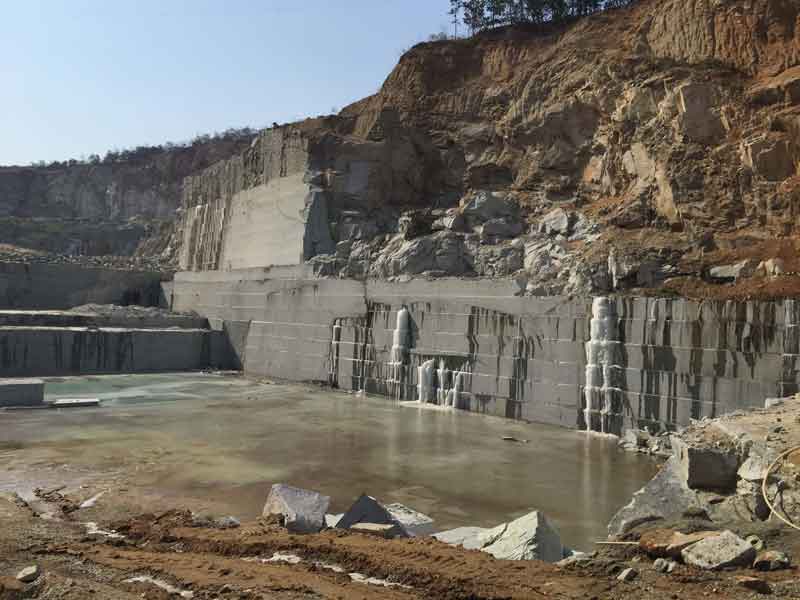Checking Out Granite Quarries in South Africa Market: From Quarry to Masterpiece
Checking Out Granite Quarries in South Africa Market: From Quarry to Masterpiece
Blog Article
Unearthing the Rich History and Sustainable Practices of Granite Quarrying
As we base on the precipice of uncovering the intricate tapestry of granite quarrying, a journey through time reveals not simply the physical act of removing stone however also the social and historical relevance woven into the extremely fabric of this method. From the old origins that laid the structure for modern-day quarrying techniques to the lasting practices that are shaping the future of this sector, each carve mark on granite surfaces narrates waiting to be unearthed (granite quarries in south africa). The tradition of granite quarrying extends much beyond plain removal; it is a testament to human ingenuity, strength, and the long-lasting allure of this impressive stone
Ancient Origins of Granite Quarrying
Going back to old civilizations, the practice of quarrying granite has been an indispensable part of human history and architectural improvement. The earliest proof of granite quarrying go back to old Egypt, where massive pyramids and elaborate sculptures were crafted from this long lasting rock. The Egyptians made use of primitive devices to remove granite blocks from quarries, showcasing the importance of this material in their monumental buildings.
Moving on in history, the Greeks likewise made significant contributions to the quarrying of granite. The Greeks made use of granite in various architectural wonders, such as holy places and statuaries, showing their ability in shaping and sculpting this sturdy stone. The Romans additionally fine-tuned the methods of quarrying granite, utilizing sophisticated tools like chisels and hammers to extract and form granite for their legendary frameworks.
Via the centuries, the method of quarrying granite has developed, with modern innovations boosting effectiveness while preserving the timeless appeal of this all-natural rock - granite quarries in south africa. From ancient worlds to contemporary builders, the heritage of granite quarrying remains to shape our globe
Advancement of Quarrying Methods
The evolution of quarrying strategies has actually been marked by a continuous development in the direction of higher efficiency and accuracy in extracting granite. From the rudimentary approaches utilized by our forefathers to the advanced technologies made use of in contemporary quarrying procedures, the market has actually gone through significant innovations. Early quarrying methods entailed hands-on labor with standard tools such as blades, hammers, and wedges to remove granite blocks from the planet. As civilizations proceeded, techniques like fire-setting and primitive dynamites were introduced to promote the removal procedure.
In even more current times, the arrival of machinery reinvented the quarrying sector, enabling quicker removal prices and increased efficiency. Technologies such as ruby cord saws, high-pressure water jets, and pneumatically-driven drills have ended up being common in modern-day quarries, enabling accurate cutting and minimized waste. Innovations in computer-controlled tools and 3D modeling have actually maximized quarrying procedures, leading to marginal ecological effect and enhanced sustainability methods. As the demand for granite continues to rise, the evolution of quarrying techniques remains integral to conference sector requires effectively and sustainably.
Social Relevance of Granite
Granite holds a profound social significance throughout different civilizations as a result of its long-lasting presence in architectural masterpieces and prized monoliths. From the stunning pyramids of Egypt to the elaborate makings of the Angkor Wat temple in Cambodia, granite has actually been a product of choice for sharing splendour and longevity in social heritage. In ancient Rome, granite columns decorated temples and public structures, symbolizing toughness and permanence. The social significance of granite expands beyond its physical features; it embodies strength, stability, and eternity, making it a symbol of withstanding heritages and customs.

Sustainable Practices in Quarrying
In the middle of the abundant background of granite quarrying and its social significance lies a growing emphasis on sustainable methods within the sector. As ecological awareness and issues regarding resource deficiency have actually increased globally, the quarrying market has actually progressively embraced sustainable methods to decrease its effect on the setting and bordering neighborhoods.

Moreover, recovery and recovery of quarry sites post-extraction are essential to sustainable methods. By recovering quarried areas to a natural or useful state, such as creating wildlife habitats or leisure rooms, quarriers can counter the ecological impact of their operations and contribute positively to the neighborhood ecosystem.
Legacy of Granite Quarrying
With a historical background steeped in craftsmanship and industrial development, what sustaining influence has granite quarrying left on the landscape of modern-day culture? The heritage of granite quarrying goes beyond simple extraction methods; it has shaped architectural marvels, city landscapes, and social heritage worldwide. The sturdy nature of granite has actually made it a recommended option for monuments, buildings, and infrastructure, standing as a testimony to the skill and virtuosity of quarry employees across generations.
Furthermore, the economic footprint of granite quarrying can not be overlooked. The industry continues to give job opportunity and drive neighborhood economic climates in areas where granite removal prevails. It has actually likewise spurred technological developments in quarrying techniques and tools, causing much more efficient and lasting methods.
In regards to sustainability, the legacy of granite quarrying consists of efforts to alleviate ecological effects via reclamation tasks and responsible resource monitoring. By balancing economic passions with environmental stewardship, the market makes every effort to guarantee that future generations can proceed to profit from this enduring all-natural source.
Conclusion

Report this page